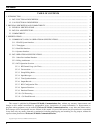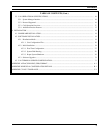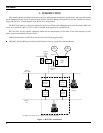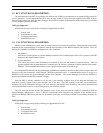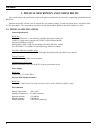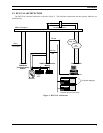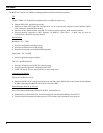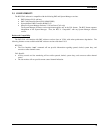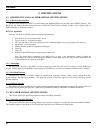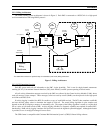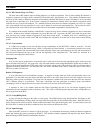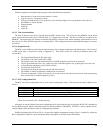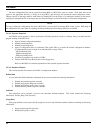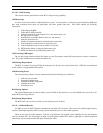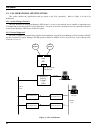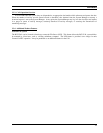
LBI-38965
10
3. SPECIFICATIONS
3.1. COMMON BCU AND CAL OPERATIONAL SPECIFICATIONS
3.1.1. EDACS System Interface
The BCU/CAL interfaces to EDACS via a full duplex port supporting high-level data link control (HDLC) protocol. The
BCU/CAL will adapt to the data transmission rate to which the Central Activity Module (CAM) is set to operate (64K or
360K, selectable via CAM dip switches).
BCU/CAL Input Data
Each raw activity record (RAR) contains the following information:
1. Day and time of event accurate to ±0.1 second
2. Type of event (i.e., assignment or drop)
3. Call type (individual clear voice, group clear voice, individual digital voice, group digital voice, data, etc.)
4. Site number or console number
5. Channel number (to match assignments with drops)
6. Caller ID
7. Callee ID
8. Digitally dialed PSTN digits for outgoing interconnect calls
Note: The dialed digits correspond to the digits sent by a radio to the interconnect system to initiate an
interconnect call; dual tone multi-frequency (DTMF) overdial digits sent by the radio once an interconnect call
is in progress are not registered by the BCU.
3.1.2. Throughput
The BCU/CAL's interface to the IMC is capable of receiving a peak data rate of 192 raw activity records (RARs) per
second. A buffer stores incoming RARs at the peak rate of 192 RARs per second for a minimum of 300 seconds (5 minutes).
3.1.3. Hard Disk Interface
The BCU/CAL provides nonvolatile storage of the BCU/CAL operating software, CDRs, system configuration data,
system defaults, and subscriber attributes. The hard disk provides concurrent support of call record processing and the
operator interface.
3.1.4. Operator Interface
Most BCU/CAL operator functions are capable of being performed without impacting or reducing the capacity of the call
processing functions below specified rates. Refer to the User Interface Manual, LBI-38967, for further information.
3.2. BCU OPERATIONAL SPECIFICATIONS
This section outlines the specifications that are unique to the BCU personality.
3.2.1. Subscriber Attribute Database
Each system subscriber and each group defined on the system is assigned a record in the subscriber attribute database.
This database supports a maximum of 16,383 individual subscribers and a maximum of 2048 groups.



